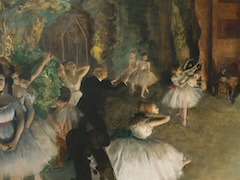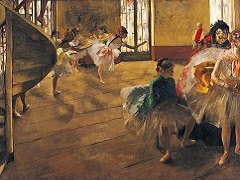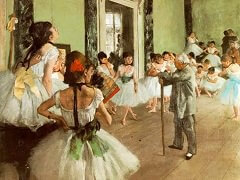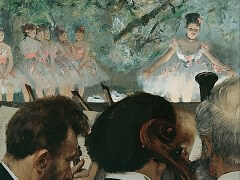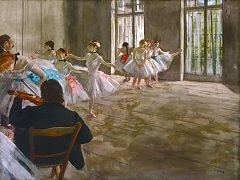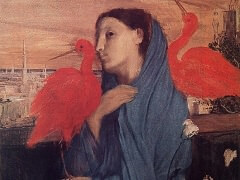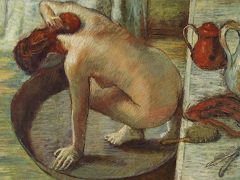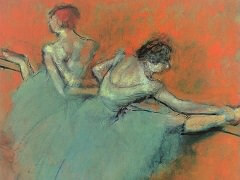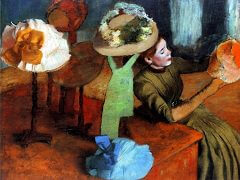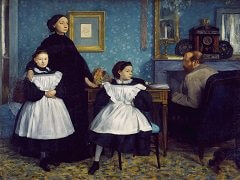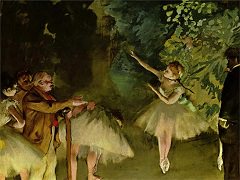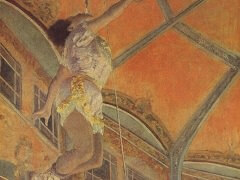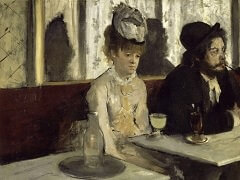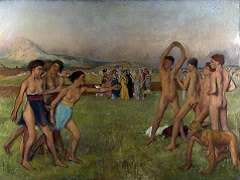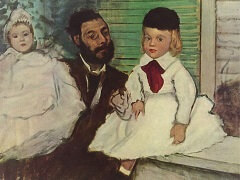The Star, 1878 by Edgar Degas
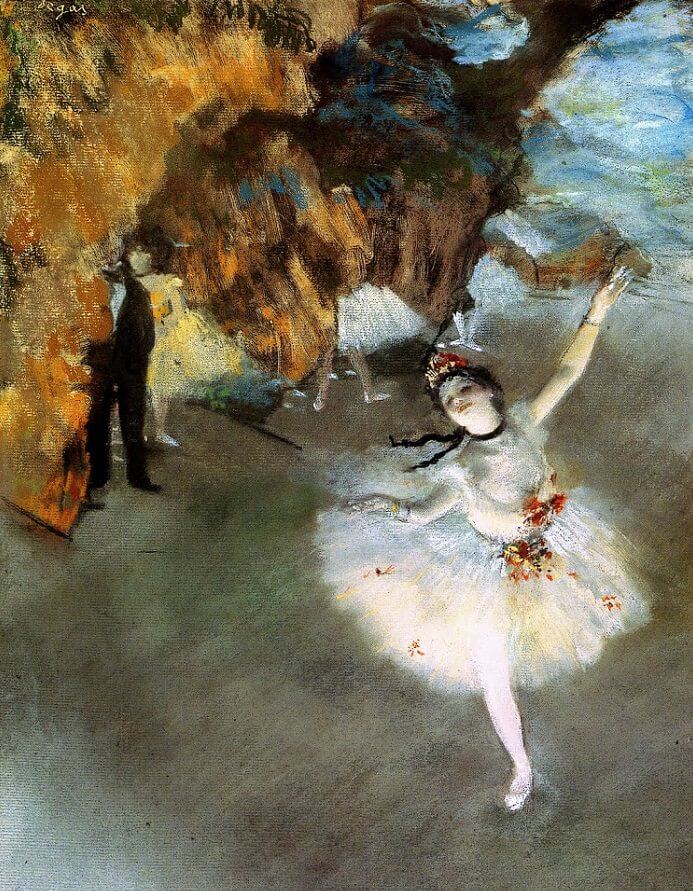
This painting is titled L'Étoile (The Star). We see a lone ballerina on the stage, the stage lighting shining brilliantly onto her and her performance. She is en pointe, balancing gracefully on one leg and maintaining a majestic pose. There are flowers on her white dress; her ribbon flows out from her extended neck; and she wears a crown atop her head. She bends her head back and closes her eyes in sweet triumph at the success of her performance (perhaps the audience is clapping for this young star at this moment), and her rosy cheeks blush with the satisfaction of accomplishment.
She almost could be a star, ascending to the heavens with her great feats of physical strength and perfected gracefulness. Maybe in this moment she feels, like a star, on top of the world, but one glance to the left and we can see, hiding behind the curtain, a foreboding, black figure standing calmly and watchfully to the side of all the action. This is the young dancer's patron. His is the world of violent brushstrokes and threatening forms, as seen in the stylistic upper-left-hand section of the painting. The stage curtains are painted frenziedly, and that whole side of the painting seems to be inching toward the sanctity of the star's glowing brilliance. The lines bear down over her and seek to engulf her. This is the reality behind this radiant performer. Soon her act will be done, and she will have to go back to her controlling male patron. She is most likely, in reality, a prostitute - his prostitute (this was the reality of the ballerina business during the late 1800s). Her life is probably actually quite far from being so bright off the stage, but here, for this brief moment of time she can break free from all of that in a dance that will elevate her to stardom. So she closes her eyes and dances away in happiness; but it is all farce, for a haunting and inescapable reality awaits just behind the curtain. For late 19th century female performers, this was the unfortunate reality, and Degas tapped into it with an almost obsessive devotion. Symbolic of the industrial dystopia created under Victorianism, a star such as this would have been snuffed out behind the smoke and exhaust of steel factories and mills during this time. An overall negativity and hopeless cynicism developed in writers and artists as Modernism developed into an established philosophy.
Artists like the Impressionists approached the Turn of the Century with doubt and pessimism for the coming millennium. There was a gloom that seemed to pervade over the future.

